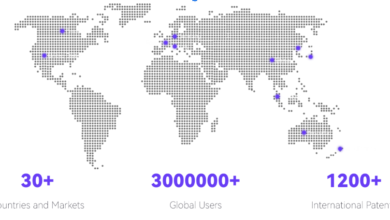AI Face Swap Technology in Advertising Campaigns

AI face swap technology is increasingly becoming a pivotal tool in advertising campaigns, enabling brands to craft personalized content that resonates with a broad spectrum of consumers. This innovation allows for the seamless integration of diverse facial features into marketing materials, potentially enhancing emotional engagement and relevance. However, as the line between creativity and ethical responsibility blurs, questions arise regarding identity manipulation and consent. Understanding these implications is essential for brands looking to navigate this new landscape effectively—what frameworks might be necessary to ensure ethical practices in this evolving field?
Overview of AI Face Swap Technology
AI face swap technology represents a significant advancement in digital media, allowing for the seamless integration of one person’s facial features onto another’s in video and photographic content.
This innovative tool leverages sophisticated face recognition algorithms and digital manipulation techniques, enabling creative expression and personalization.
As it evolves, the potential for ethical considerations and implications surrounding identity and authenticity becomes increasingly relevant in the digital landscape.
See also: How to Maximize Your Real Estate ROI With Renovations
Benefits for Advertising Campaigns
How can advertisers leverage the power of face swap technology to create more impactful campaigns?
By personalizing content to resonate with their target audience, brands can enhance brand engagement significantly. This innovative approach allows for tailored messaging, creating deeper emotional connections.
Ultimately, face swap technology empowers advertisers to break traditional boundaries, fostering an environment where creativity meets consumer freedom, leading to more effective campaigns.
Ethical Considerations and Challenges
What boundaries must advertisers navigate when employing face swap technology in their campaigns?
Privacy concerns and consent issues loom large, as the manipulation of identities can lead to unauthorized use of individuals’ likenesses.
Ethical advertising demands transparency and respect for personal autonomy, ensuring that consumers are not only informed but also empowered to control how their images are utilized in marketing contexts.
Future Trends in Marketing
As the marketing landscape continues to evolve, the integration of advanced technologies such as face swap capabilities is set to redefine consumer engagement strategies.
Future trends will likely emphasize:
- Enhanced personalization trends
- Real-time consumer interaction
- Data-driven decision making
- Immersive advertising experiences
These innovations promise to empower brands, fostering deeper connections and resonating with consumers’ desires for authenticity and relevance.
Conclusion
In conclusion, the integration of AI face swap technology into advertising campaigns represents a transformative leap in marketing creativity, enabling brands to forge profound connections with audiences. This innovation, while promising a more personalized and engaging consumer experience, also invites a thoughtful dialogue surrounding ethical implications. Navigating the delicate balance between artistic expression and respect for individual identity is essential, ensuring that the light of progress does not cast shadows of concern in the realm of consumer trust and consent.




